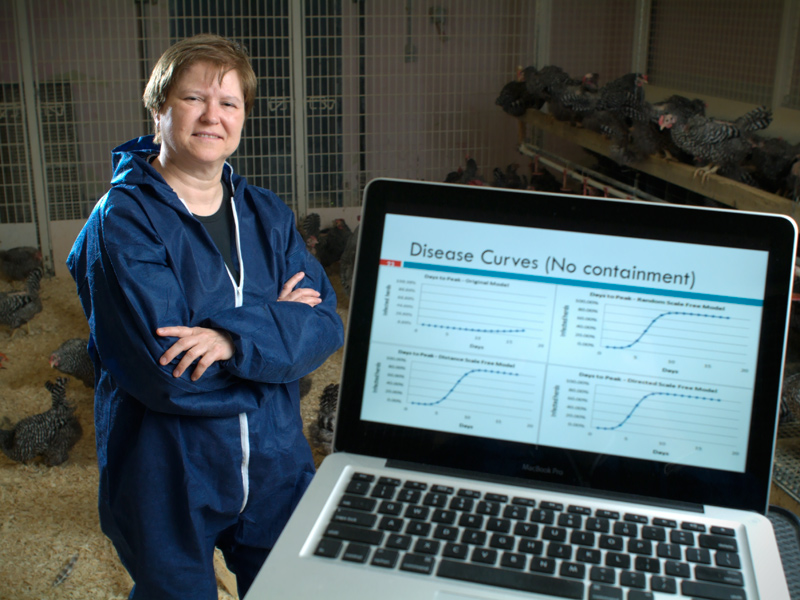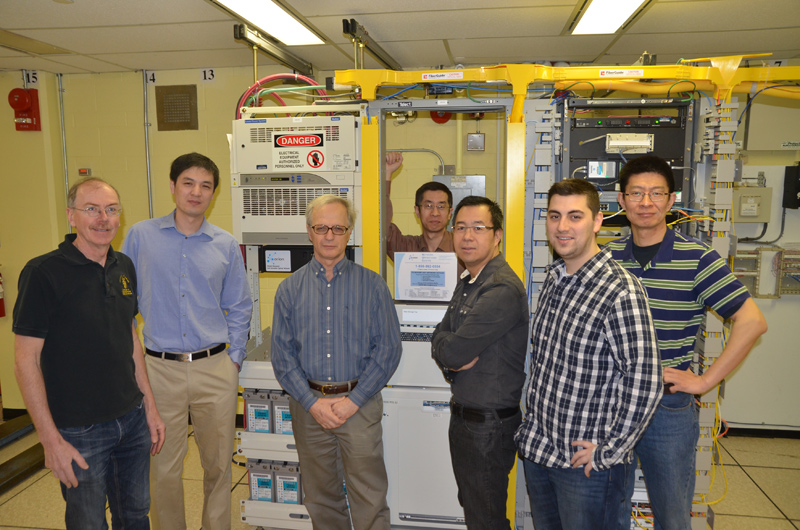At the University of Guelph, Professor Deborah Stacey is helping to develop the statistical modelling software that keeps Ontario’s food safe from contamination. The analysis of the huge amounts of data produced by her research happens thanks to a high-performance computing network made possible by ORION.
It’s morning. Farmers across Ontario are waking up to tend to their animals. You might be sitting down to a plate of scrambled eggs—maybe even a few strips of bacon. We take it for granted that this food will be safe to eat. But we rarely think about why. That, in part, is thanks to women like Professor Deborah Stacey, Assistant Dean of Research and Graduate Studies at the University of Guelph’s College of Physical and Engineering Science, and Associate Professor at the University of Guelph’s School of Computer Science. Relying on a high-performance computing network made possible by ORION, her research helps inform the regulatory structures that ensure our food is free of contamination and that the animals it comes from are healthy.

Professor Deborah Stacey relies upon the shared, high-performance, research computing environment to develop statistical modelling software. Picture courtesy of University of Guelph
It is, in part, due to her work that we now have modelling programs such as NAADSM, the North American Animal Disease Spread Model. This is the software that governments and industry bodies rely on to plan for and prevent epidemics.
“NAADSM allows you to put in various scenarios for various animal diseases to see how they would spread,” Professor Stacey explains. “My interest is in looking at the network connections within that: contact, moving animals from one herd to another, and licking or touching other animals. I’m interested in how these contact networks differ across industries, which could suggest a different path of disease spread.”
This research is then used by organizations such as the Guelph-based Poultry Industry Council to help determine which transportation and feed networks most effectively limit or eliminate things like avian diseases—in other words, how to ensure your scrambled eggs are safe.
“Studying these networks made me more aware of how we develop and distribute the food we eat,” Professor Stacey says. “It was surprising to find out how critical these farming systems are, and that they can be understood using mathematical models. These human systems that we’ve evolved are incredibly complex, and it was enlightening to see how much we need to study this—our food safety and security depend on understanding these systems.”
That’s where the ORION network comes in. Stacey’s work produces a staggering amount of data, and it requires a lot of statistical analysis. It’s done through the Shared Hierarchical Academic Research Computing Network, or SHARCNET, a consortium of Ontario universities, colleges and research centres using a shared system of distributed high-performance computing. It’s the ORION network that links them together.

The University of Guelph’s Computing and Communications Services team in front of the ORION infrastructure rack, which connects university researchers to SHARCNET. Picture courtesy of University of Guelph
And at the University of Guelph, researchers are now able to access that data more quickly than ever before. Thanks to the institution’s recent decision to upgrade their ORION network access to 10 gigabits per second, researchers can be confident that their connection to SHARCNET will be fast and reliable and up to the task of accessing the huge amounts of data their research has produced. ORION also helps to ensure that the University of Guelph will be able to operate business-as-usual through all kinds of scenarios. By taking advantage of the ORION network’s geographical reach, the university ensures that all vital data is properly backed up. “Our main storage array is at Guelph,” explains Leon Loo, Manager of Systems Management.
“We back up to a device here daily, then a duplicate sits on another device located at York University…The connection between the two is through the ORION network.”
This also means a cost-savings for Guelph: transferring their data through ORION reduces the price tag on a back-up system of this scale. And it means that educators, students and researchers like Professor Stacey will be supported by the university’s IT systems should there ever be some kind of disaster—even if it’s just a burst pipe in one of the server rooms. Any data destroyed at one centre will still be safely stored at the other.
It’s all part of the complex process that keeps a farmer’s chickens healthy and your scrambled eggs safe. And ORION is at the heart of it.

